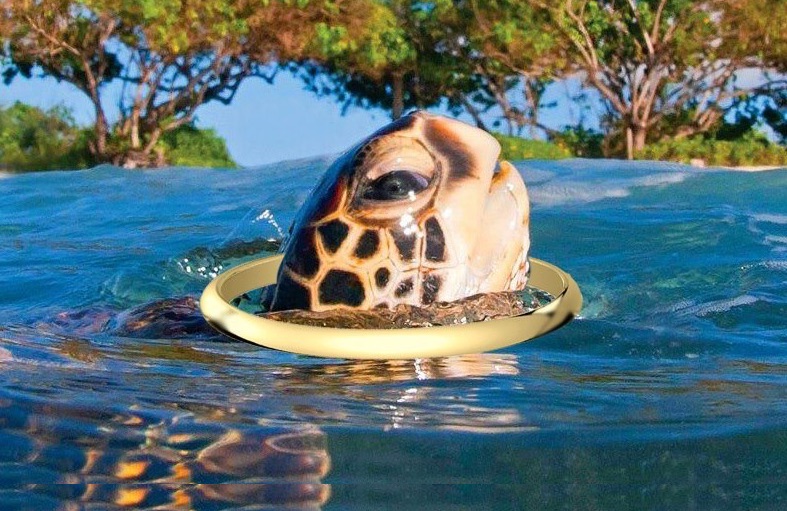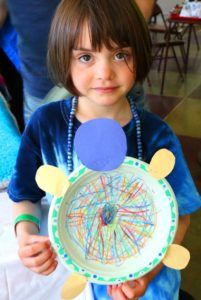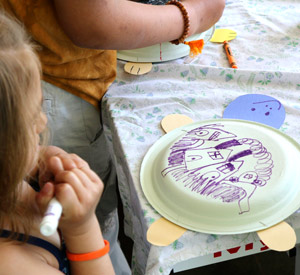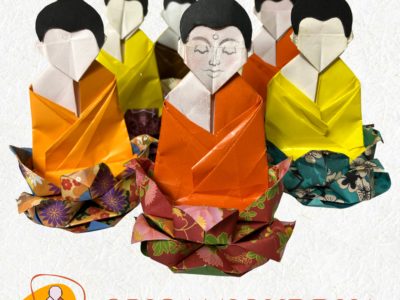Turtle Treasure Tray Craft Project

About This Resource
Details
Turtle Treasure Tray Activity
Lesson Objective: Make and use a Turtle Treasure Tray to explore idea of life being precious and rare.
Time: 30 minutes (10 minutes to make a Turtle Tray; 10 minutes to collect precious items; 10 minutes of short meditation and discussion)
Materials: Deep paper plates, construction paper, drawing materials, scissors, staplers, meditation gong or bell, various items like semi-precious stones, flowers etc that children can choose from.
Prep: Pre-cut turtle heads and appendages out of the construction paper for children to staple onto the paper plate.
Additional teaching tools: Video of This Precious Life by Lama Karma (15 minutes). The Sūtra of Nanda’s Going Forth via 84,000. An introduction to the Agama Sutra (page 7). Video on Sea Turtle migration. Video about endangered Sea Turtles. More information and reflections on The Four Thoughts.

Imagine you are a blind turtle. You live in a very deep ocean. The dark water has been your home for one hundred years. For all this time you have never gone to the surface of the water. Finally, today you get an inch on your turtle nose and decide to swim upward, hoping the itch will go away. You swim up and up and up. You can’t see but you can feel the water weight lessening the higher you go. You keep going and going until suddenly you feel something completely new: Air! You have breached the surface and it feels amazing! Also, at the exact moment your turtle nose comes out of the water, a golden ring lands around it. A precious golden ring! It’s like a beautiful necklace! What an impossibly rare set of circumstances is THAT?
With this parable, the Buddha taught how rare it is to be reborn a human being.
Questions to ask after the story:
What does is mean when something is rare? When there is only a little of something, how do we treat it?
What do you think are some things that are rare and precious to all people?
What are things that are rare and precious to all beings?
 Step one: Have the children draw a face and details on the turtle heads and appendages and then staple them to the paper plates. The inside of the plate is the turtle’s belly and the outside is its shell.
Step one: Have the children draw a face and details on the turtle heads and appendages and then staple them to the paper plates. The inside of the plate is the turtle’s belly and the outside is its shell.
Step two: Ask the children to draw things that are precious to them on the turtle’s shell.
Step three: Go outside and ask the children to choose some natural things they are drawn to. Also you can have some pre-selected items for them to sort through.
Step four: Have the children sit down and quietly arrange their items on the trays.
Step five: Sit in a circle. Have the children place their turtles in front of them about a foot away. Ask them to sit criss-cross applesauce and look at their turtles steadily. Prepare them that, when you ring the meditation bell, they will imagine their attention is sending a golden ring onto their turtle. They can do this for as long as they hear the bell or longer if possible. Finally, ask them to put one hand on their belly and one on their heart. Prepare them that, when they hear the meditation bell this time, they will try to feel their own breath, maybe even their heartbeat, literally getting in touch with their own precious life.
Questions to ask after the activity:
Were you able to feel your own breathing or even your heartbeat? What was that like? Is that something you could remember to do often or is hard to do?
What would make it easier to remember, even when we are upset, that our life is precious and rare?
What are some ways we can use our precious human life to help others, including endangered Sea Turtles?
Lesson author: Maya van der Meer
Lesson development team: David Gonzalez, Stephanie Barnes, Jan Tarlin

